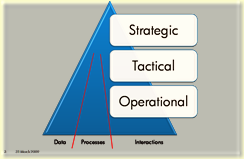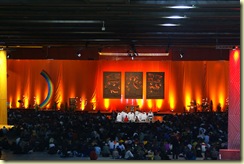Saying that Italians, French, German and Dutch people react differently is an understatement. We all have our stories of culture clashes. Our colleagues in different countries do not behave exactly like us. Although we probably share the same organizational culture, our cultural background makes us approach events and situations differently. This often make our colleagues blink, as they do not understand our reactions. Particularly in large global organizations, collaboration is hindered by these elements, without being taken care of.
When I started working with Indian colleagues, I quickly got completely confused. Not only did they shake their heads strangely, they also told me they would do something and did not do it. Actually, my statement is NOT correct. I should say I understood they were going to do something because they answered “yes” to my question. My assumption became my reality within the frame of my own cultural value system. Much later I understood, India had a different value system. As one of my Indian friends one day told me, “there are 40 ways to say yes in Hindi, there is no way to say no”. They had responded candidly to my question, with what in their eyes meant something like “yes, I hear what you say”. They were sincerely astonished when, one week later, I  expected a deliverable.
expected a deliverable.
This example demonstrates the misunderstandings happening daily in large enterprises. The more globalization moves to the east, the more we encounter such issues. Employees are not prepared for such challenges. I found the image hereby, based on work performed by Huntington an interesting starting point, although I believe in differences between ethnic groups within the areas.
When working in an international environment it is impossible to understand all cultures we are confronted to, However, building cultural awareness is important to avoid clashes and misunderstanding in the first place. Cultural sensitive people will be less astonished about unusual responses and try to understand what is happening rather than reacting negatively. Achieving this is already great progress for collaboration as it allows the people to openly discuss their differences and explain why each member behaves the way he/she does. Let me finish this note with a small example. When I started working globally, I received the name of a contact in Japan. I called him up, as a good European, telling him I wanted to ask him a couple questions. He responded “please send your questions in writing”. This drove me nuts. Who did he think he was? Was I not good enough to be allowed to talk to him? I actually was so angry I talked about it with my boss. He explained that the Japanese person was far from excellent in English. As he did not want to loose face by giving me a wrong answer, he asked me to send my questions in writing. This would allow him to use his translation tools to ensure he understood exactly what I needed and provided the best answer. This was a lesson I never forgot. Lets not look at the reaction from the other through our own lenses, but rather try to understand what the reaction actually mean. Much later, when I had build a relationship with him, I had the opportunity to discuss this “near incident” with him. We had a real good discussion, it helped us to understand each-other better and to become friends. If the reaction of one of your foreign colleagues drives you creasy, it may be time to try to understand rather than judge.














 impression they were in the same room and it took me a while to realize what was happening. They were, here again, using holograms to beam the image of one of them to the place of the other. They even managed to take a group picture and virtually shake hand.
impression they were in the same room and it took me a while to realize what was happening. They were, here again, using holograms to beam the image of one of them to the place of the other. They even managed to take a group picture and virtually shake hand. 

